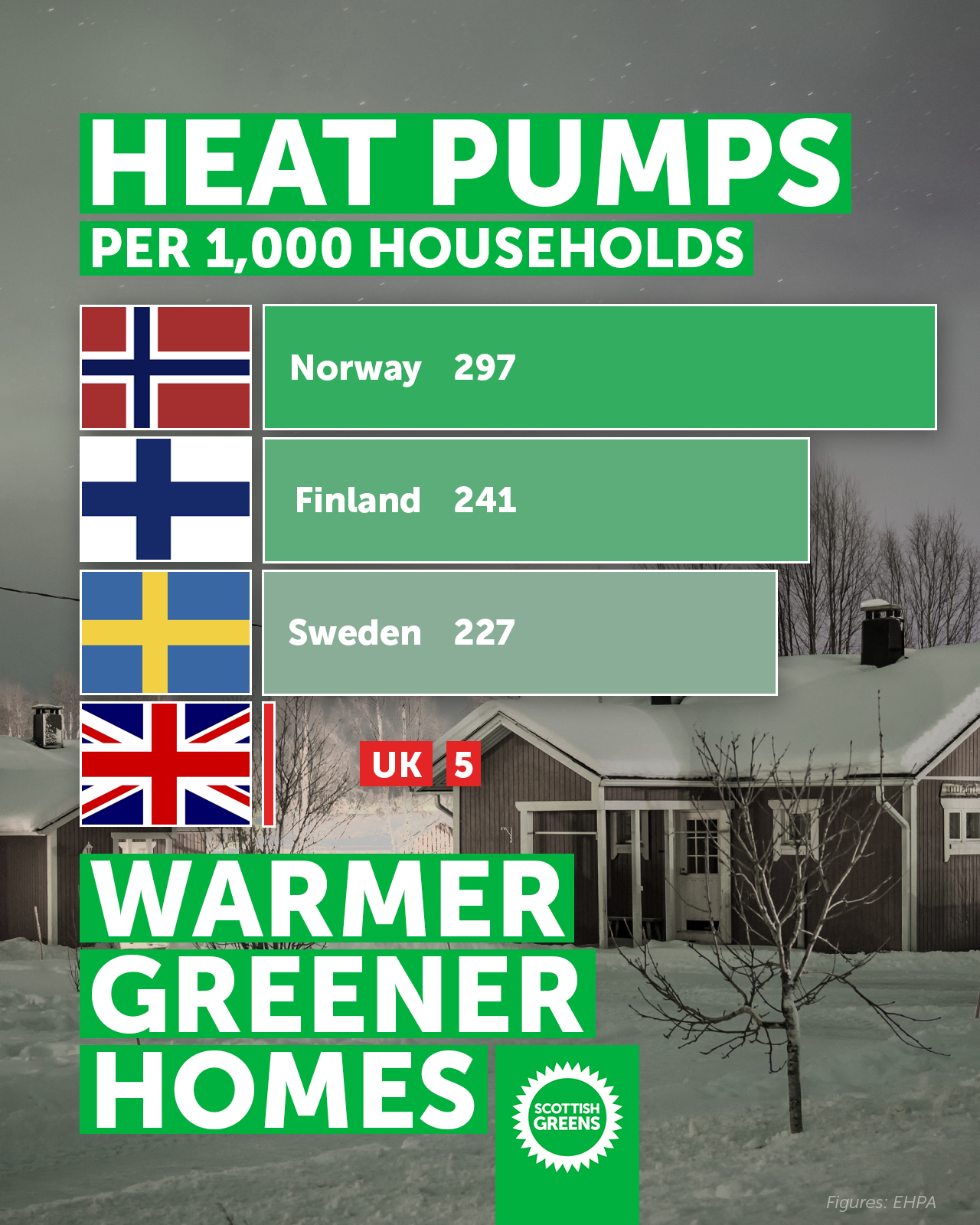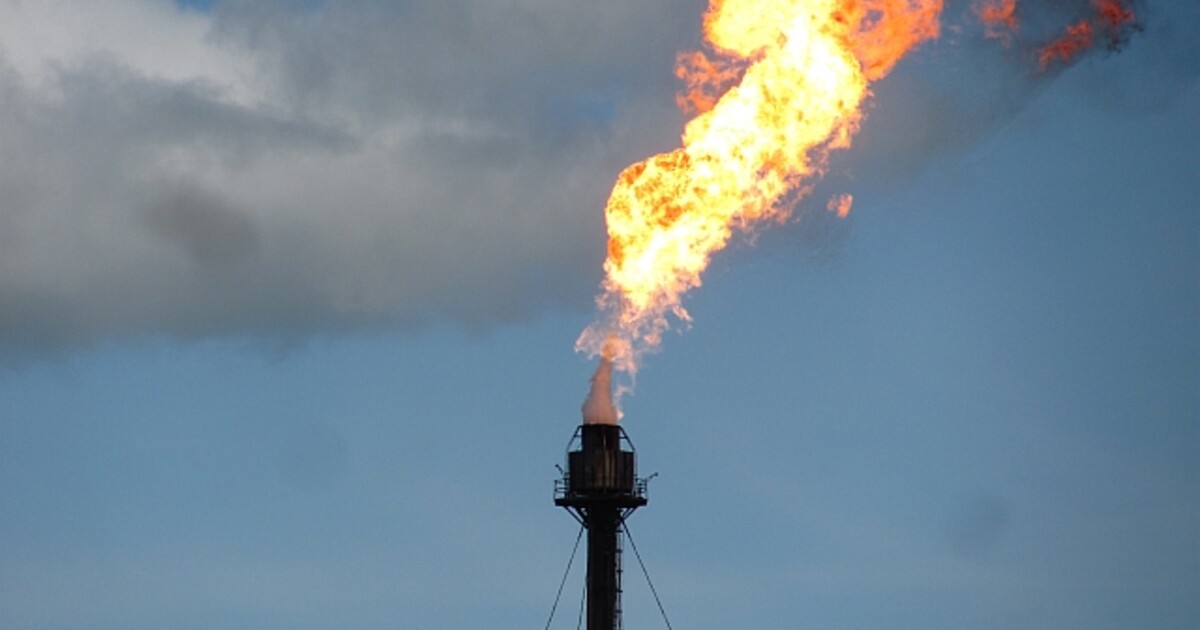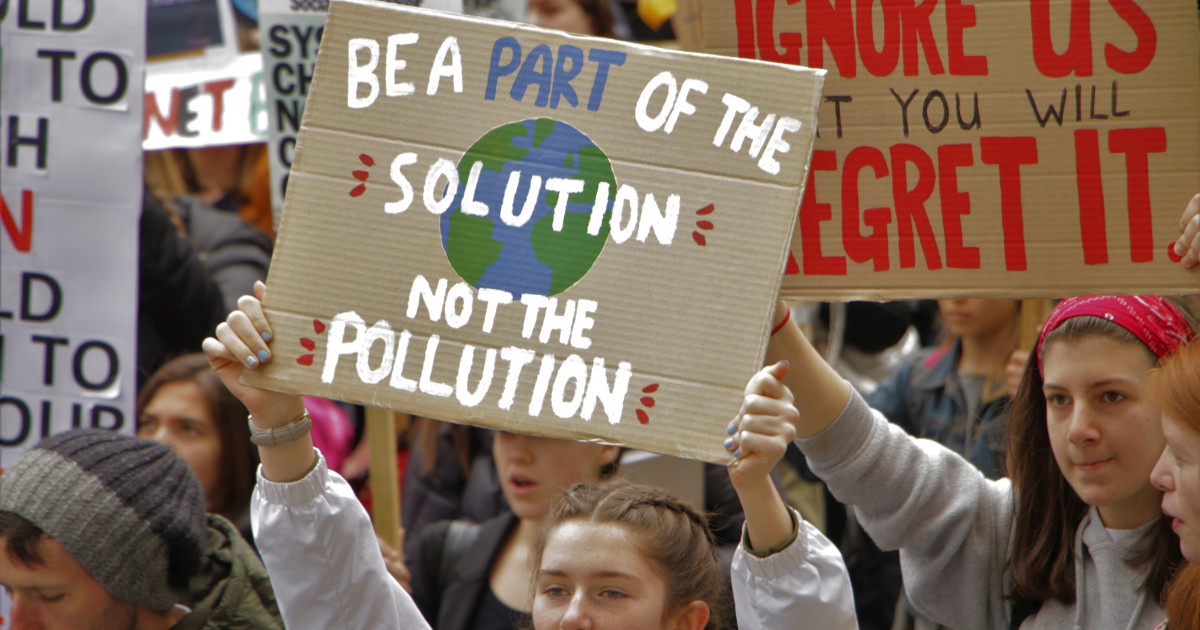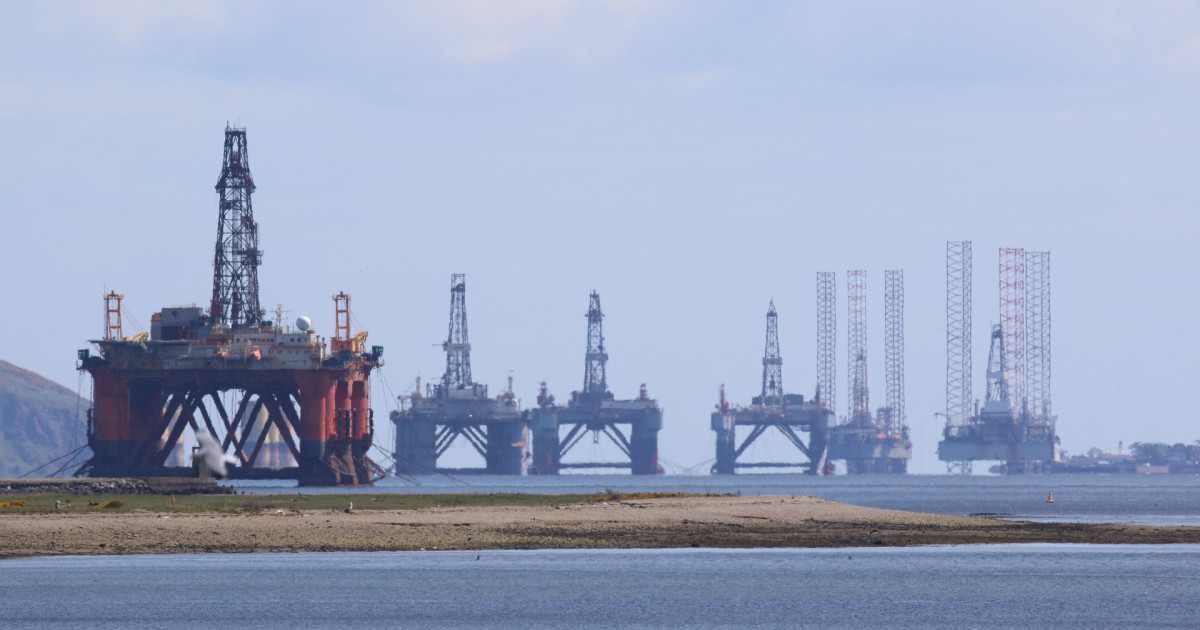At a glance: Greener, warmer homes for Scotland
So, what’s the skinny?
Patrick Harvie, the Scottish Government’s Minister for Zero Carbon Buildings has published a consultation paper on planned Heating in Buildings legislation which sets out a path for how best to deliver greener, warmer homes for Scotland.
It’s a really important piece of work with one part of the consultation looking at social housing and another focused on all other private and public properties, which follows on from the previously published Heat in Buildings Strategy which came out in 2021.
Can we just say, this sounds like the most boring thing in the world to talk about
Hey, one person’s electric car is another’s heat pump, it’s all about perspective. You should get on trend my friend because these are becoming aspirational, Scandi chic.
Not only that, low-carbon heat is a long term plan for helping save energy which helps folk save money and upgrade properties for the future.
The CCC demanded ambitious action over climate, you don’t get much bigger than this.
What does it involve
A lot. This genuinely is the next big step in meeting our climate ambitions and embracing a new warmer, cleaner future for our homes and our buildings. It means no one should face living in the cold, and it will help the planet at the same time.
Firstly, those who own privately rented properties will need to meet a thing called minimum energy efficiency standards by 2028. That’s more good news for tenants’ because warmer homes mean better health and lower fuel bills.
Contrast that with private home lets in England where the UK Government recently axed similar plans, and you can see the difference. People there are facing forking out an extra £315 every year on their bills because of the UK Government’s u-turn.
Isn’t that just picking on landlords?
Actually, they will benefit too. Logic tells you that better maintained properties will last longer, and that happier and healthier tenants’ may stay longer. To be honest, those who can afford to let out properties really should be playing their part in the climate emergency.
What if you don’t rent, but own your own place
Colleagues have thought long and hard about that, listened to people, and agreed it makes sense to wait a little longer so private homes have until 2033 to make the changes. That gives the market more time to mature and folk more time to prepare.
To help, the Scottish Government has put in place the most generous grant funding in the UK towards the costs of installing things like zero emission heat pumps and insulation.
It also means firms can plan ahead with confidence to hire more people and manufacturers can be ready for a busy time as all kinds of new technology is rolled out, with consumer led demand likely to see the average costs of products fall too.
Wait, I can get money to future proof my home?
Yup. The Scottish Government has loads of ways to help. You can get funding of £18,000 in rural homes or £15,000 in non rural areas to help improve the energy efficiency of homes and install zero emission heat, depending on eligibility.
They even have a dedicated website with all the info at Home Energy Scotland. It’s also got a lot of other advice on this like coping with winter right now and what to do if you are experiencing fuel poverty, another big reason to make this change.
If the UK government does what it has promised to do, which is reduce the artificial gap between electricity and gas prices, then running costs of clean heat will fall dramatically. because clean heat is more efficient.
Some companies also offer better deals on greener tariffs.
How much is it?
On average it costs around £2,000-£4000 for energy efficiency improvements such as insulation, and approximately £8,000-£10,000 for heat pumps. That’s why the Scottish Government is rolling out solid financial help to support people in doing this.
The added benefit being, of course, that it not only cuts down on energy use but, as emerging evidence shows, it is making homes easier to sell at a premium because buyers like the fact the work has already been done.
A recent report by WWF and Scottish Power: Better Homes, Cooler Planet, suggested that could be as much as 3% of a property’s value at the time of writing.
More than 300,000 homes in Scotland now have clean heat installed. The bit still to do is to move the estimated 88% of other homes - more than 2 million - from old style fossil fuels to clean heat so they can enjoy all the benefits too.
What about other buildings, surely they use energy too?
That’s very astute of you. Public buildings will need to go zero carbon by 2038 and all other buildings by 2045.
We’re not playing at this, it’s a proper and planned national effort. It’s ambitious, aspirational and achievable and will see the biggest change in how we heat our buildings since they turned on the gas pipes in the 1970s.
The big difference here being it will save money and energy use, keep people healthier and create and support jobs.
Public buildings are not only an important part of that, they can lead by example.
Surely we should just build houses with this kind of stuff fitted already?
You are absolutely right, and we think so too, which is why the Scottish Greens have made sure that all newly built buildings will have to have zero emissions heating from April next year.
That is a massive step forward and comes because of our New Build Heat Standard which we have been campaigning on for years.
Now it will be reality.
How many jobs?
As an example we reckon there are around 12,500 full time equivalent jobs in the heat and building improvement sector already.
Something called the Supply Chain Delivery Plan estimates there will be an extra 16,400 jobs created on top of that within the next six years - roughly equivalent to the average number of people who attend a Hibs home game.
Like any market, much of it will be dictated by demand and deadlines, which is why we are advising people to act sooner rather than later.
Scotland is lucky in that a dozen colleges either offer or plan to roll out training for heat pump installers, for example, with about 1000 newly qualified workers a year expected.
Can communities and those in flats or tenements do this too?
There are some challenges, for sure, but none of them are insurmountable.
One of the best solutions we have been looking at are local heat networks, where people share energy from a clean local district heating system.
We already have around 1000 of them in Scotland, but some of them are small.
So we are working on new powers to support them and look at how best to expand them into other places where they can offer the most benefit.
What is a heat pump?
It’s a pump that takes heat from the ground or the air and increases its temperature to the point that it keeps buildings warm inside.
Because it uses electricity and smart bits of kit, it is cleaner and more efficient than gas, so you use less energy while staying warm.
Most are box shaped but some energy firms have started supplying funky new designs while some countries even have stylish covers.
I’m confused, I read somewhere that Scotland is too cold for this kind of stuff
Ah, you’ve been targeted by efforts by those on the right and potentially vested interests to spread myths and disinformation about climate action, bizarrely obsessed for some reason with heat pumps in particular.
This comprehensive article on a media blitz by gas lobbyists against clean heat published by investigative website DeSmog is a real eye opener on the industrial scale of attempts by the fossil fuel industry to persuade the likes of you and me against climate action.
Environmental journalist Vicky Allen also published this thought provoking piece in The Herald about what she dubbed an ‘information war’ against the technology.
Patrick Harvie warned about exactly this when he was interviewed for Scotland on Sunday at the weekend when he warned: “There have been some people who've always tried to misrepresent what we were proposing to do.”
So, they work in the snow then?
Ha ha, yes, they work in the snow and in really, really cold temperatures. Just look at Scandinavia, Norway in particular.
The popular Life In Norway website has this really useful article talking about How Norwegians Pay Less for Heating while The Guardian delved into the history of heat pumps in the Nordics which stretches right back to the 1970s.
Similarly Euronews shared this excellent mythbuster with its 25 million monthly online readers on some of the fake claims levied against the low emission technologies.
Our graphic explains just how far the UK is from our Scandi cousins and why Scotland, unlike Westminster, is determined to change that.
What happens next?
The consultation will run until 8 March 2024 and as well as seeking responses from the public will talk to lenders, businesses and conveyancers and hold town hall style meetings opening up the conversation to as many people as possible.
Part of that might mean more financial products on the market which could see benefits or better rates on things like mortgages or home improvement loans emerge.
All the responses will then be scrutinised and a final decision made on when to publish a Bill in the Scottish Parliament hopefully passed by 2025, ahead of something called secondary legislation to make sure it does what it says it will.
Our target is for all privately rented homes to meet minimum energy standards by 2028, then the same for all other private homes in 2033, followed by the deadline for public buildings to transition to zero carbon by 2038.
There was a previous suggestion that a million homes could be done by 2030, but we think this is a better and fairer way to move forward.
It means we can better take advantage of new technology that has emerged, help industry to grow its capacity and create thousands of new jobs, while at the same time help people understand and plan for the changes ahead.
The plan is the same, this helps with its delivery in a fair, practical and achievable way,
The big date to watch for will be in 2045 when all buildings must stop using polluting heating systems.
But no-one needs to wait until then. The sooner everyone gets involved, the better it will be for people and for planet.
Does installing these systems make a mess?
Well, probably, we’re not going to lie. But once it's tidied up at least you can sit on your sofa feeling warm and fuzzy as a trendsetter, so it's not all bad.
Do ask
How much energy can I save?
Don’t ask
What would Rishi do?








